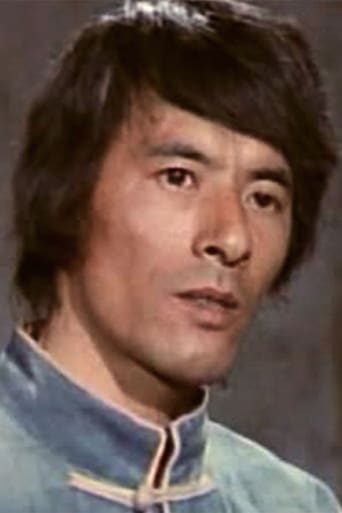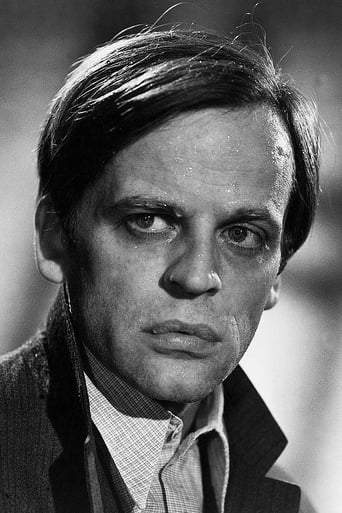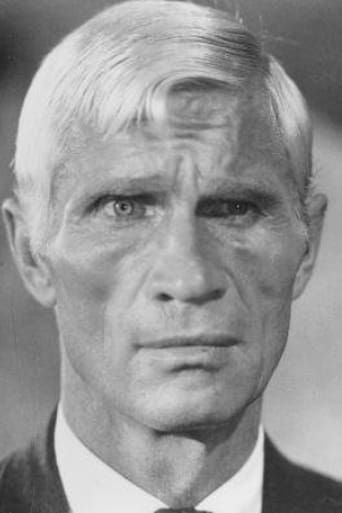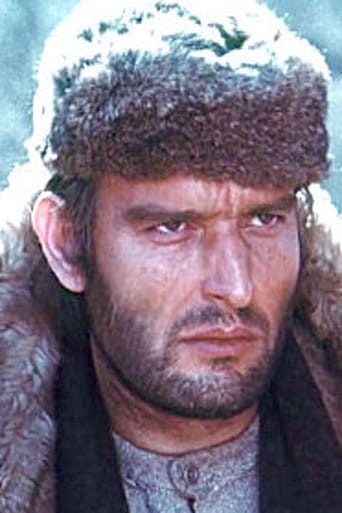ironhorse_iv
1973's film 'Shanghai Joe' is no, 2000's 'Shanghai Noon'. It's not even in the league of 1975's TV Show 'Kung Fu' with actor, David Carradine; in my opinion, this Italian Wuxia Western movie was below average. Don't get me wrong, "Shanghai Joe' is no average Joe Schmoe. It's entertaining, but it's just, wasn't that good. Directed by Mario Caiano, 'The Fighting Fist of Shanghai Joe', also known as 'My Name Is Shanghai Joe', 'The Dragon Strikes Back', 'To Kill or to Die' and 'Karate Jack' tells the story of a Chinese immigrant, Shanghai Joe/Karate Jack/Chin Hau (Chen Lee) seeking a new and peaceful life in America, only to find out that he's not exactly welcomed with open arms, by cattle ranchers led by owner, Stanley Spencer (Piero Lulli), who using Mexican slaves as cattle. Without spoiling the movie, too much, I have to say, Chen Lee isn't a good actor. A 'deer in the headlights' boring performance. His acting is so mundane by his emotionless delivery. Yes, I guess, he supposed to be rather calm, cool, and collected, but he doesn't show, any range to anything that is happening on screen like people dying. What happen!? Did he went to the Tommy Wiseau's school of acting!? Not only that, but his character is such a Gary Stu! He seems seemingly perfect in every task, he does. It doesn't make sense. Like how, in the world, did he get so good in playing cards, while training in martial arts!? Also, how did Shanghai Joe able to walk after getting shot in the legs, after a few days of healing!? It doesn't add up! Also, Chen Lee's badly made choreography fight scenes were just as bizarre and silly with his unrealistic slow-motion flips, mediocre hits/kicks and awkward cries. I was laughing my head off, when action scenes like the bull-chopping, fancy jumping a horse and bullet catching scene were on screen. It was so over-the-top! However, the gore and visual effects were alright for the time, even if they didn't film it that well. I was really confusing on how Shanghai Joe went to eye gouge and heart pull, his enemies, because of that. Despite that, I have to say, the music score by composer Bruno Nicolai is a notable asset that really help set the tone of the film, even if it's recycle from 1970's western film, 'Have a Good Funeral, My Friend... Sartana Will Pay'. While, the picture quality is decent, some speckling and the colors are indeed washed out. Also the sound is sometimes rather indistinct but all of the English dialogue is understandable, no gaps in the Italian translates. Yet, by far, the best thing in this movie are the supporting cast that plays the series of villains that Spencer hires to take down Shanghai Joe. Actors like Gordon Mitchell and Klaus Kinski really made their characters, Burying Sam & Scalper Jack really stood out, by their cunning action. Even, the over the top gory, unrealistic fight sequences with Japanese fighter, Mikuja (Katsutoshi Mikuriya) & Tricky the Gambler (Giacomo Rossi-Stuart) were memorable. Yet, I wish, they could had done more with Pedro the Cannibal (Claudio Undari). His scene was a bit disappointing. Talking about disappointing. I really don't like how Carla Romanelli's Cristina was just there to be the force love interest and damsel in distress. Her character really didn't add anything to the film, at all! Another problem with this film is the pacing. Honestly, did we really need to see, his journey from California to Texas, or his scenes with previous ranchers!? It takes forever for the main plot to start. Also, for a few dollars more, they really could had, work on the production value, a little more. First off, the Almerian locations look so small and ugly-looking. San Francisco is a good example. It doesn't look or feel like San Francisco at the time. Also, the subtitles really got it wrong with St. Francisco. It wasn't never call that!? Another problem is the costumes; some of the characters look like, they're wearing clothes from a 1940's gangster movie rather than more western-looking costumes! It was very jarring. Anyways, while this film gives us a rather bleak view of the United States as an intolerant country, uneducated, racist and violent which still traffics humans that might offend some viewers. As an American, I kinda like this movie, despite its flaws. After all, the film was enough of a success to boast a sequel, 1975's 'The Return of Shanghai Joe'. Overall: Enjoyable east-meets-west fare that is a little bit awkward. Still, highly recommended.
Leofwine_draca
Probably one of the oddest sub-genres in cinema is the kung fu spaghetti western. THE FIGHTING FISTS OF SHANGHAI JOE is one of the best and most popular of this genre, which saw Italian producers deciding to combine the then-popular martial arts film with the spaghetti western, which like the peplum ten years previously, was crying out for fresh ideas and imagination. The result was about half-a-dozen productions which mixed chop-socky action with grizzly cowboys and desert town locations to unique effect. THE FIGHTING FISTS OF SHANGHAI JOE is actually a very well-made movie, benefiting from strong direction from Mario Caiano, a rather overlooked genre personality from the period, who could usually be relied upon to deliver a watchable movie. The plot is simple and straightforward and a basis for the never-ending scenes of action which are hard-hitting and often violent.Although the premise is silly and could be played for laughs, this is actually a very dark film in which the hard-edged action is often punctuated by merciless violence and surprising gore effects. The main themes that the film explores are racism and oppression; our hero Shanghai Joe must suffer both of these throughout the film. First come the expected encounters with racist cowboys, whose vocabulary usually seems to contain only racist taunts, before Joe teaches them a lesson in manners. Later, he defeats a gang of slave labourers quite happy using Mexican peasants to do their dirty work, thus invoking the wrath of a criminal boss and setting the latter half of the film in motion.Whereas the first half of the movie spends a fair amount of time developing Joe's character and the new landscape in which he finds himself, also exploring his relationships with other people, the second half loses all exposition in favour of a series of fight sequences against increasingly difficult opponents (thus reminding one of a computer game). The first baddie for Joe to fight is a guy named Cannibal! The second villain is Italian regular Gordon Mitchell in a blond wig. The third villain is all brains and no brawn, as played by Giacomo Rossi-Stuart. The final villain is a scalp-hunter played by the inimitably sleazy Klaus Kinski at his manic best.The final battle of the film is the only one with any memorable choreography, seeing as Shanghai Joe gets to fight a fellow martial artist instead of an unskilled cowboy. Caiano throws in some good use of slow-motion leaping (not as silly as it sounds), some creepy music which comes as a surprise after the rest of the jolly Morricone-style score, and a wonderful 360 sweep around Joe as he searches for his opponent. The film's hero is played by Chen Lee, who is pretty decent in the part and succeeds because he's actually an actor as well as a martial artist, and seems charismatic in his role. Tons of action, arm-lopping gore, memorably deranged characters, and steadfast direction combine to make this one a whole lotta fun.
MARIO GAUCI
Minor, enjoyable and surprisingly violent Spaghetti Western, one of a clutch of such efforts embellished with an Oriental touch in the form of a martial-arts exponent hero (as can be gathered from the title). The film was enough of a success to boast a sequel – THE RETURN OF SHANGAI JOE (1975).Chen Lee is the typical meek Oriental who becomes deadly when provoked; we're given plenty of opportunity to see him at work here, particularly after he falls foul of a slave trader. The latter despatches four ruthless assassins to exterminate the Chinaman – three of whom are played by well-known actors and popular Euro-Cult figures of the era: Gordon Mitchell, Giacomo Rossi-Stuart and Klaus Kinski, the other by Robert Hundar (ill-fated hero of CUT-THROATS NINE [1972], which actually preceded this viewing!). Kinski receives second-billing but his contribution lasts all of 7 minutes (and he only turns up 68 minutes into the film!).Eventually, we learn that the title character is one of only two masters of a specific martial arts technique – so, naturally, the boss eventually calls on his equal to fight the hero! The most violent moments occur when Joe gouges the eye of one of the hired killers – a scene which surely must have inspired Quentin Tarantino for his KILL BILL (2003/4) saga – and the confrontation between the two Orientals, which involves dismembered limbs and busted torsos! As usual for films of this genre, the music score is a notable asset which is here provided by Bruno Nicolai.





